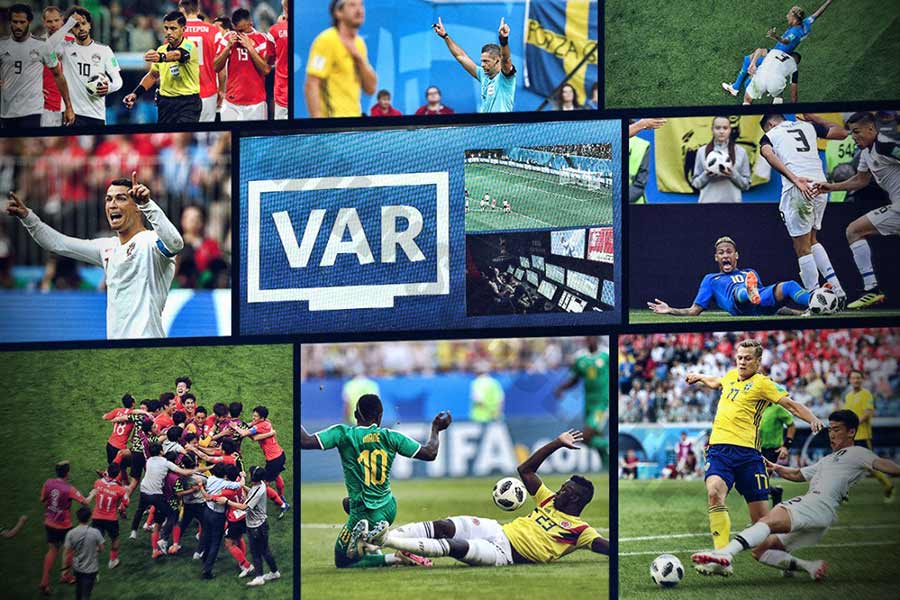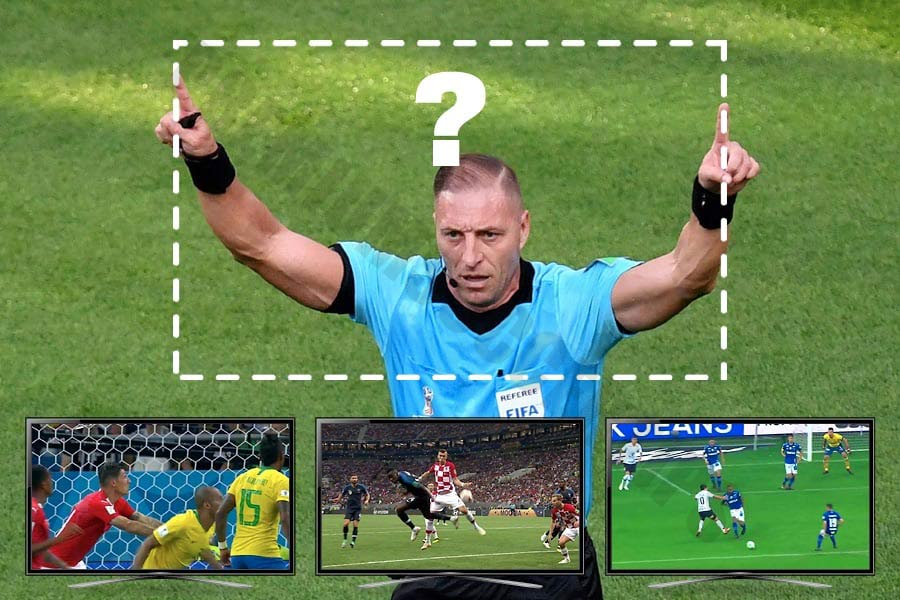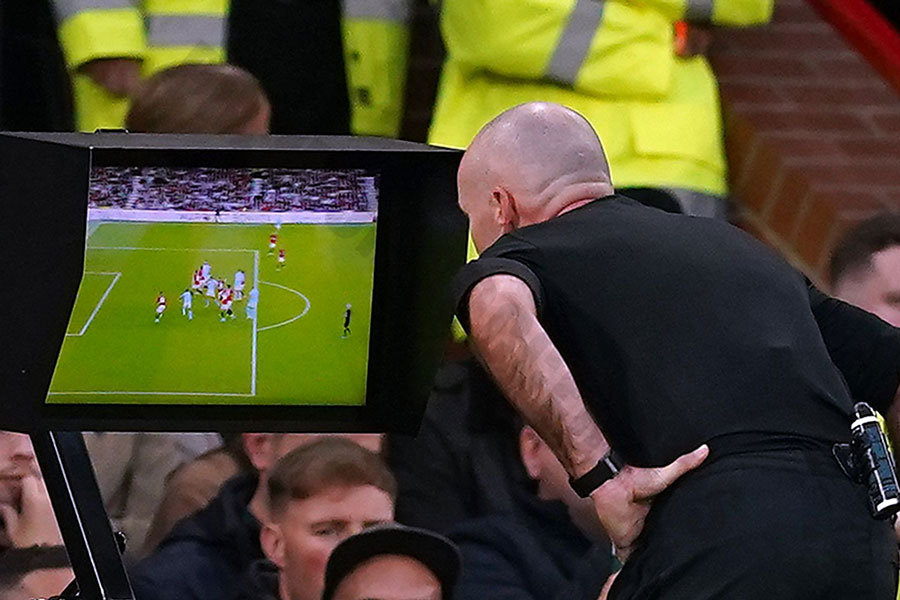What is VAR in football and how does it impact the game?
What is VAR in football, and how has it transformed the sport? VAR, or Video Assistant Referee, is a groundbreaking technology introduced to assist referees in making accurate decisions during critical moments of a football match. Since its inception, this system has revolutionized officiating, ensuring fairness and reducing errors on the pitch. From analyzing goals to reviewing potential red card incidents, VAR operates through a dedicated team monitoring live footage from multiple camera angles. Its adoption across major leagues and tournaments has sparked both praise for improving the game’s integrity and debates over its implementation and consistency. So let’s find out with Premiumsoccertips through the following article!

What is VAR? How does VAR work?
In short, VAR is a technology-enabled refereeing system that assists the on-field referee in making the right decisions at key moments in a football match.
The VAR team monitors the game remotely on multiple screens and has live access to video footage of the game through multiple camera angles.
Typically, a VAR team consists of a VAR referee, usually a former or current referee, three video assistant referees (AVARs) and a video replay operator.
Unlike other sports such as hockey or cricket, where the referee or player needs to request a video review for certain decisions, VAR continuously monitors the game and automatically alerts the referee if it is thought that a wrong decision may have been made during the game.
VAR intervention situations
However, VAR can only intervene in four specific situations where there may have been a “clear and obvious error” or a “serious missed incident”. These reviewable incidents are:
- Goal/no goal: This includes checking for offside, infringement during a penalty kick and whether the ball has crossed the line.
- Penalty/no penalty: This includes checking whether there was contact inside the penalty area, whether it was simulated or whether the offence was given incorrectly.
- Direct red card (not a second yellow): This includes considering whether the offence was serious enough to warrant a red card, whether there was a mistake of identity or whether the player was sent off.
- Mistaken identity: This is used to check whether the referee has sent off the wrong player.

The on-field referee can only request a VAR check after a decision has been made. Even if the referee does not request a VAR check, the system can still alert the referee via the headset if there is a clear error.
In these cases, the referee can choose to change or overturn the decision based on the VAR’s recommendation (VAR review only) or review the footage of the incident himself on a screen outside the pitch (on-field review).
In both cases, the final decision rests with the on-field referee while the VAR can only make recommendations and advice.
If you’re looking to improve your success in sports wagering, following reliable betting tips can make a significant difference
How VAR was born and a brief history
The idea of VAR was first conceived as part of the ambitious Refereeing 2.0 project launched by the Royal Dutch Football Association (KNVB) in 2010. The project aimed to introduce the effective use of technology to help football referees make error-free decisions on the pitch.
While goal-line technology, which was also part of the same project, was quickly adopted and accepted by FIFA after trials in 2012, VAR took longer to be widely adopted.
After several mock trials, the VAR system was first tested live in a friendly match between PSV and FC Eindhoven in the Eredivisie in July 2016. In international football, VAR was first used in a friendly between Italy and France on 1 September 2016.

Meanwhile, the first professional football match to feature VAR was the official KNVB Cup first round match between Ajax and Willem II on 21 September 2016. This was also the first time pitchside monitors were introduced with VAR. The 2017 FIFA Confederations Cup marked the first time VAR was used in an international tournament.
The A-League in Australia was the first top-flight league to adopt VAR in 2017, followed shortly after by Major League Soccer (MLS) in the United States. Among Europe’s top leagues, Germany’s Bundesliga and Italy’s Serie A adopted VAR in the 2017-18 season, while Spain’s La Liga and France’s Ligue 1 introduced the technology in 2018-19.
The English Premier League adopted VAR in the 2019-20 season.
The introduction of VAR at the 2018 FIFA World Cup in Russia was a major milestone and eventually paved the way for the system’s integration into the 2018-19 UEFA Champions League.
How does VAR work?
VAR works very similarly to instant replay in other sports such as American football or. Its purpose is to ensure that the referee makes the correct decision on the field. VAR is operated by an AVAR (video assistant referee). The AVAR monitors the VAR, keeps a record of incidents that need to be reviewed and reports the results of VAR reviews to the commentators and relevant staff. The VAR monitors every decision made by the referee and can review it. If the AVAR believes that something has been missed or that a decision has been made incorrectly, he or she will notify the referee via headset.

Once an error has been detected and play has been stopped, the referee can take action in three ways. There are some things that do not need to be reviewed, such as offside or handball, so the referee can simply change or overturn the decision. Other decisions, such as disciplinary action or the severity of a foul, are more subjective and may require the referee to review things through on-field review. The referee can also override a VAR decision if they feel it is incorrect or too serious.
VAR Dos and Don’ts
There are four main ways that VAR is used to review a play. Although it is an integral part of the game, it is important to remember that VAR is just an assistant referee. This means that any decision made on the pitch via VAR can be overturned by the referee at any time.
Conclusion
Understanding what is VAR in football highlights its profound impact on the sport, making it far cleaner and fairer than before. During the 2018 World Cup, FIFA reported that VAR ensured 99.3% of decisions were correct, compared to 95% by referees alone. Despite its effectiveness, VAR is not without flaws, occasionally making errors and drawing criticism over unclear rules and inconsistent decisions. Nevertheless, it’s crucial to remember that VAR serves as an assistant, with the match referee holding the authority over final decisions. While VAR has significantly advanced football officiating, it remains a developing system, still evolving to meet the complexities of the game’s dynamic nature.
See more: Find out which country has the most football players








